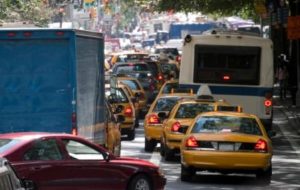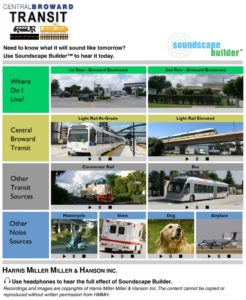Hearing is Believing
05.08.2009 | HMMH |by Doug Barrett
Although “soundscape” may sound jargony compared to more familiar expressions like “landscape” and “viewscape,” the term has been around at least since the 1970s (R. Murray Schafer, The Tuning of the World, 1977). Soundscape encompasses all aspects of an acoustical environment, and often is used to characterize natural sounds in unspoiled outdoor environments. Consideration of soundscape, however, also is critical for urban spaces where people live, work, and play. Within these settings, street traffic, aircraft overflights, and other noise sources can affect the character and even the intended use of an outdoor facility.
On May 19, the Acoustical Society of America and the City of Portland, Oregon Noise Control Office will host a joint symposium on “Urban Design with Soundscape in Mind.” The symposium’s goal is “to provide planners, architects, engineers and the interested public with tools to use in addressing noise impacts in an urban setting.” Topics will include “The Political Need to Consider Noise Impacts on Urban Livability” and “The Physical Need to Consider Noise Impacts on Urban Livability.” A critical, related topic is the development of tools and techniques to help both decision makers and the general public consider future noise impacts, by hearing them with their own ears now.
After years of struggling to describe the arcane world of noise metrics, logarithmic decibel scales, and frequency-weighting to the public, HMMH decided that there had to be a better way to answer the question “what will it sound like?” Fortunately, recent advances in digital recording and processing technology provided the foundation for a solution. Building on these tools, HMMH developed Virtual Soundscapes™ so that listeners can understand what a proposed project will sound like without the distractions of logarithms or even the mention of a decibel.
Using binaural (stereo in-ear microphone) recordings, acoustic models, and specialized sound mixing software, Virtual Soundscapes™ create incredibly realistic stereo simulations by layering together background soundscapes and other noise sources. These recordings, which may be presented at meetings, installed on a touch-screen kiosk or computer, or posted on a website, allow decision-makers and community members to hear and modify future sound environments through a compelling, interactive experience. (Use HMMH’s Soundscape Builder™ to create your own Virtual Soundscape™.)
Recently, Central Broward Transit and San Diego International Airport employed customized versions of HMMH’s Virtual Soundscapes™ at large public meetings. In these venues, listeners experienced interactive simulations using a touch-screen kiosk (touch the screen to select a virtual airplane, train, bus, or barking dog – touch it again to open or close a sound insulated window) and high-quality noise canceling headphones. Gene Reindel, Manager of HMMH’s Sacramento office, reported back after a successful meeting in San Diego, “I knew that things were going well when listeners reflexively looked skyward when they heard an airplane accompanied by barking dogs!”







